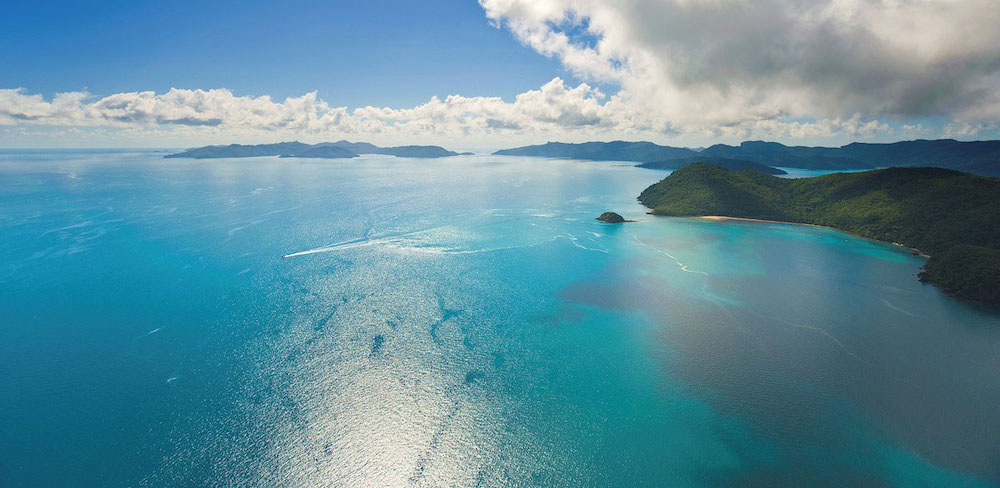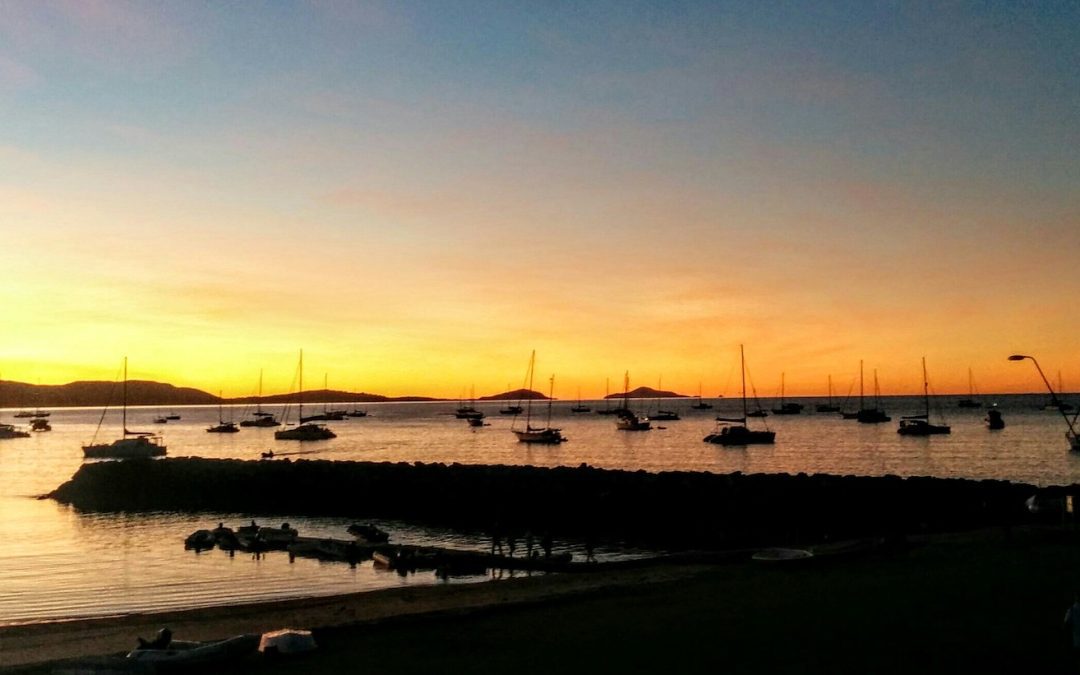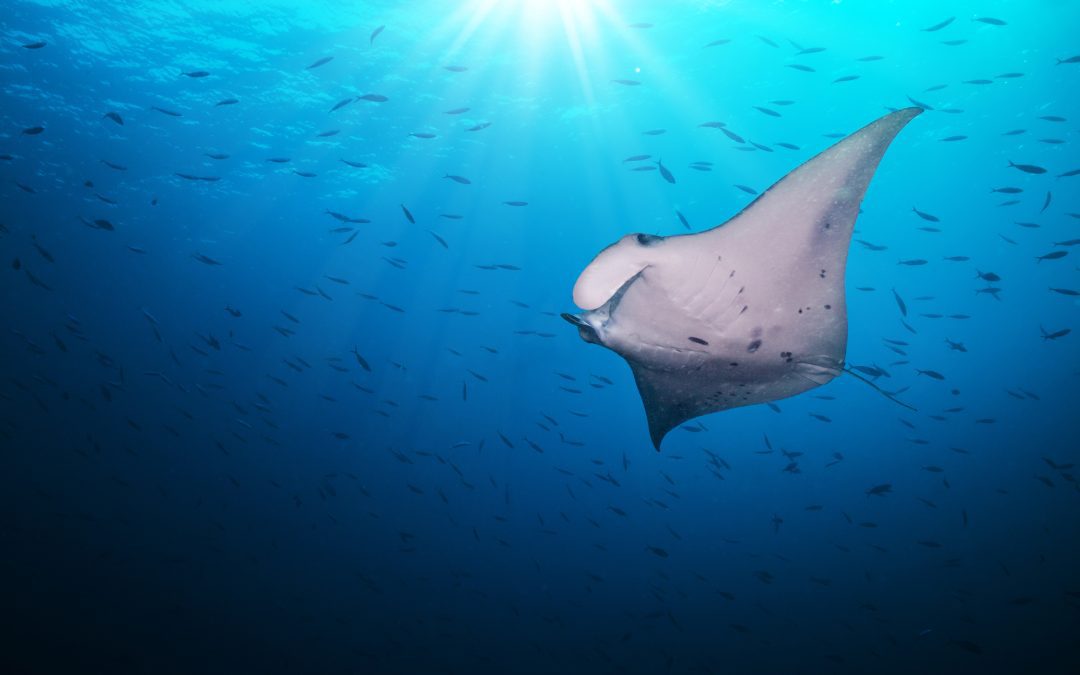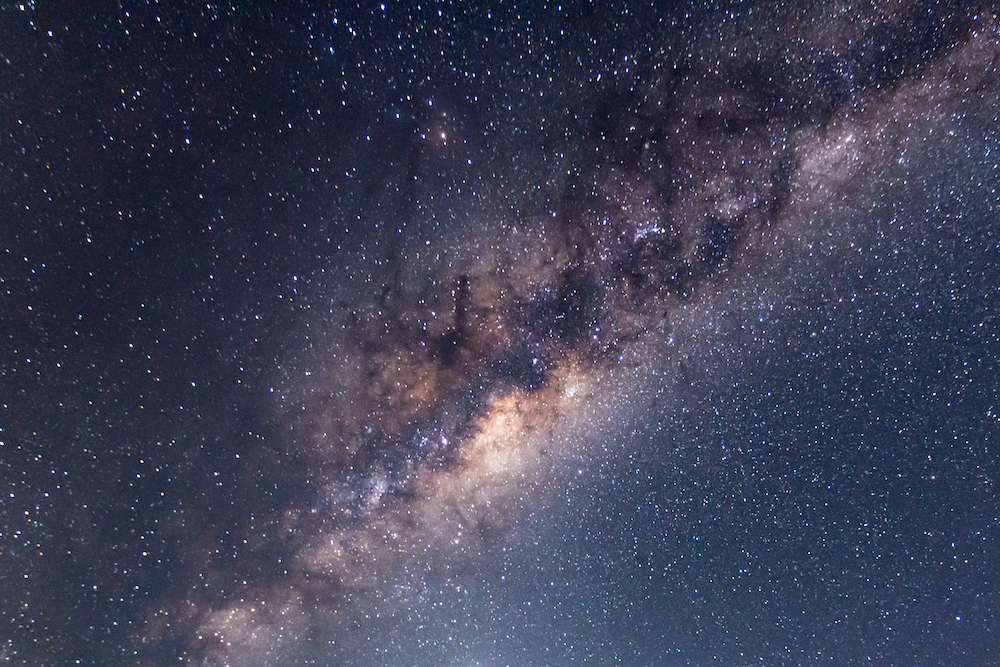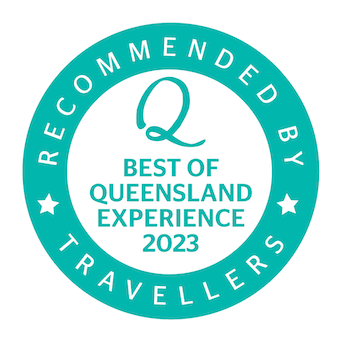Whale watching season in the Whitsundays runs from June until early October, conveniently lapping into the school holidays.
The season starts when Humpback whales migrate north from Antarctica to breed and give birth in the warm tropical waters of the Whitsundays. When the calves are strong enough, the whales commence the return trip south towards the end of September and the beginning of October.
This post outlines a guide to whale watching in The Whitsundays and gives tips for those in charge of operating their own vessels to keep the whales safe and to make sure you get the most out of this incredible experience.
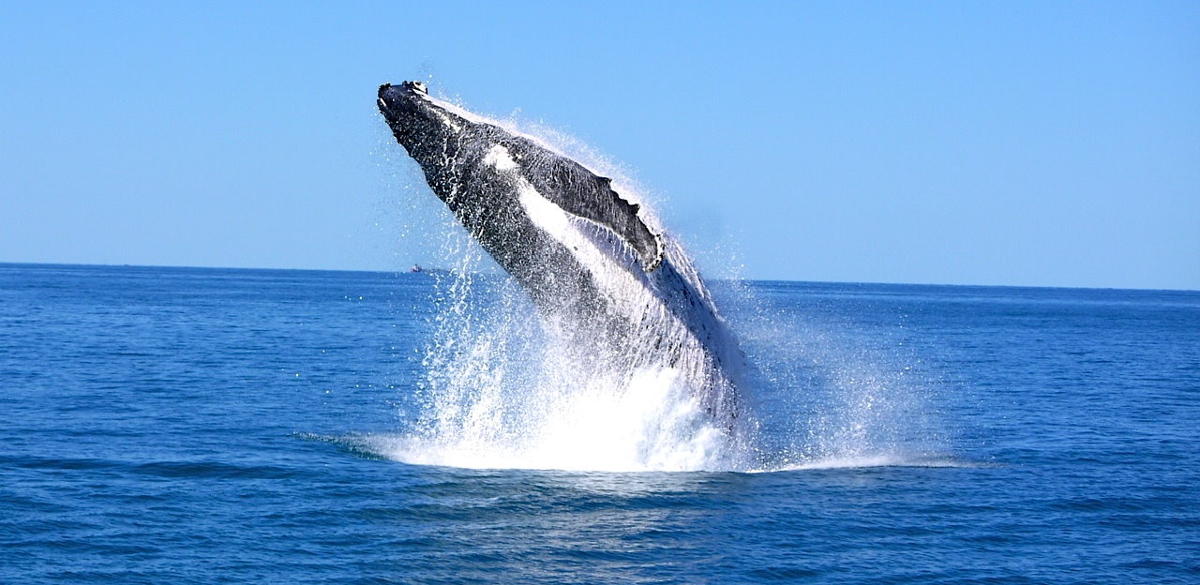
How to see whales in The Whitsundays
There are many ways to see whales during The Whitsundays’ whale season. You can view them from Hamilton Island, join a day or overnight tour group through an agent like Sailing Whitsundays or you can see them throughout the islands during a bareboating holiday.
The Whitsundays does have a reputation as “the Humpback Highway”, so your chances of seeing whales are exceptionally high.
Hiring a charter boat is the best way to go whale watching in The Whitsundays
A bareboat holiday ensures you’re in the right place at the right time for a one-on-one whale encounter. It’s not only thrilling to see the whales on your sailing holiday, but it’s an absolute privilege to see them with your family and friends from your private boat.
When one of the fifth most enormous creatures on the planet decides it’s curious about you and approaches your yacht, it’s an interaction you will never forget.
Avoid the crowds
Being on a bareboat means there are no crowds to jostle with when these spectacular marine mammals decide to put on a show. There are other places in Australia where you can view the whales, such as Hervey Bay, but sailing in the Whitsundays offers an opportunity to experience them away from tons of tourists.
Experience whales at night
You will often spot the whales as you make your way around the islands and if you’re lucky, from the comfort of certain anchorages. Hearing whale song through the hull of your charter boat at night is one of the most magical experiences imaginable
Amazing photo opportunities
You will be out sailing for several days, so it’s likely you will get many opportunities to take great photos. Your charter’s deck is the perfect vantage point to take photos from and you can move around freely depending on where the whales are heading.
Regular sighting
There is no pressure to see whales immediately when you are on your own yacht charter. You can go at your own pace and enjoy the many opportunities you’ll have to see whales as you cruise The Whitsundays.
Citizen science
You can log your whale sightings and help scientists within the Great Barrier Reef Marine Park by using the free Eye on the Reef App. Or, join the local whale watching group on Facebook.
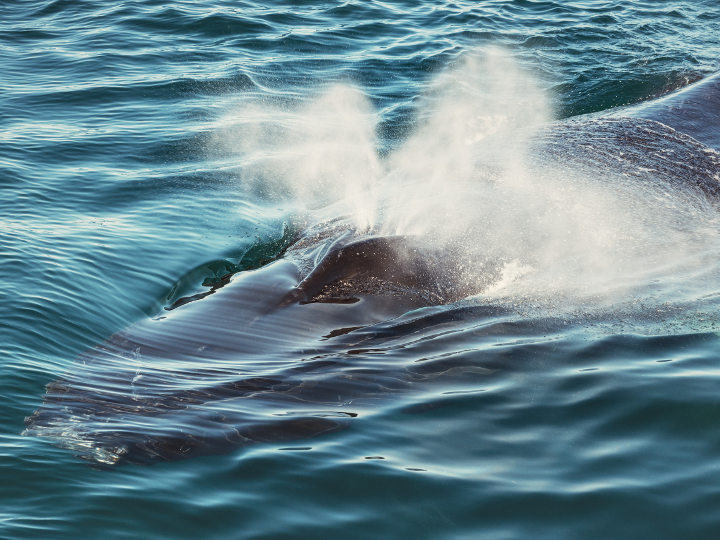
Whale Behaviours to look out for
Breaching
There is nothing more impressive than seeing a 40-tonne marine mammal launching itself out of the water and crashing back down to the surface with an almighty splash.
Spy Hopping
A curious humpback will raise its head vertically out of the water to look at you and establish orientation with the shore.
Fin slaps
It is common to see whales slapping their fins and flukes on the water’s surface, as many as 30 times in five minutes.
Blowholes
Whales blow excess water several metres into the air as they rise to the surface to breathe. The sight and sound of the spray will often initially alert you to their presence.
Tail flukes
Whales arch their backs before they dive and when a whale dives deep its tail will appear vertically above the water before slipping gracefully below the sea’s surface.
Whale Watching Tips and the best locations to find them
- The best times to see whales are when conditions are calm.
- Vessels usually report sightings and their locations over the VHF radio network so stay tuned
- During the northern migration, the whales tend to head out wide around the top and east of Hook Island, while on the return trip they seem to hug the coast.
- Whales have been known to come into a number of Whitsunday anchorages including Cid Harbour and Blue Pearl Bay.
- Watch for any signs of distress such as sudden changes in behaviour, diving often rather than staying at the surface and aggressive tail slaps.
- Consider hiring a kayak with your charter for another way to experience whale watching
- You can view whales from land at Hamilton Island (Catseye Beach)
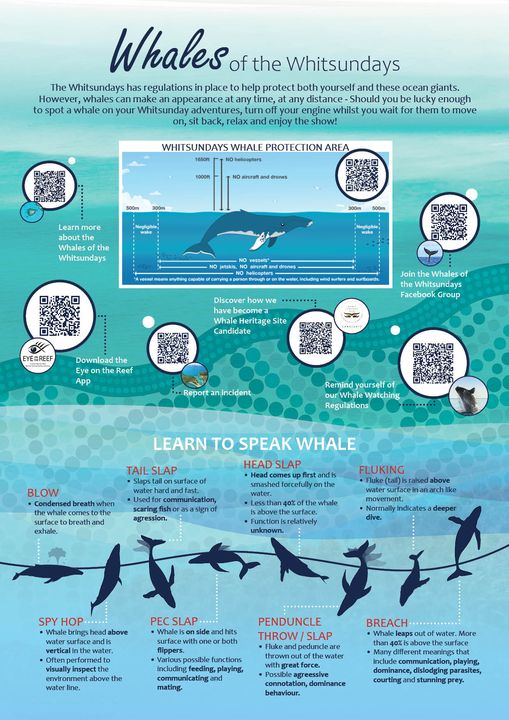
Whale Watching Safety & Protection Guidelines for the Whitsundays
For many people, seeing a whale in its natural environment is a once-in-a-lifetime experience. Getting up close to whales can be very tempting, so to minimise risks such as inadvertently separating mothers and calves regulations are in place.
The general rule is to keep your distance and let the whales approach you.
Be aware that most of the area around the Whitsunday Islands is a whale protection area. This means – No vessels to approach within 300 metres of whales and no swimming with whales.
Legal requirements and guidelines from the Great Barrier reef Marine Park Authority Website
- You must not restrict the path of whales or dolphins
- You must not touch or feed, or attempt to touch or feed, a whale or dolphin
- You must not enter the water within 100 metres of a whale or within 50 metres of a dolphin
- You must not approach closer than 30 metres to a whale or dolphin if you are in the water. If a whale or dolphin approaches you while you are in the water, move slowly, do not touch or swim towards it
- You must minimise noise when closer than 300 metres from a whale or dolphin.
- Approach the whale or dolphin only from the rear or by positioning the vessel ahead of the whale or dolphin, and always in a position that is more than 30 degrees to its observed direction of travel
- If the whale or dolphin is a calf, a vessel must not enter within a radius of 300 metres of the whale and 150 metres of the dolphin (i.e. the caution zone)
- If a calf appears causing your vessel to be within the caution zone, you must stop the vessel and turn off the engines or disengage the gears or withdraw your vessel at a constant slow speed
- If your vessel is closer than 300 metres to a whale or 150 metres to a dolphin, it must be operated at a constant slow speed, if closer than 50 metres to a dolphin, the vessel must not change course or speed suddenly
- If there are three vessels within 300 metres of a whale or dolphin, all additional vessels must remain outside a 300 metres radius from the whale or dolphin
- If a whale approaches close to your vessel, take all precautions to avoid a collision, either slow down and steer away from the animal, or place the engines in neutral and let the animal pass
- If you accidentally strike a whale or dolphin you must report it.
And remember, as the Department of Environment and Heritage Protection states:
“A fully loaded semi-trailer weighs 36 tonnes. A full-grown humpback whale weighs up to 45 tonnes. You wouldn’t stand in front of a moving semi-trailer so why would you put your boat in the way of a whale?”
Whale-watching guidelines are supplied with our vessels in the season. You will also find copies of the guidelines in a copy of 100 Magic Miles which lives on your charter boat.
There are a lot rules, but once you are out there seeing these magnificent creatures you will understand why they deserve so much protection and respect.
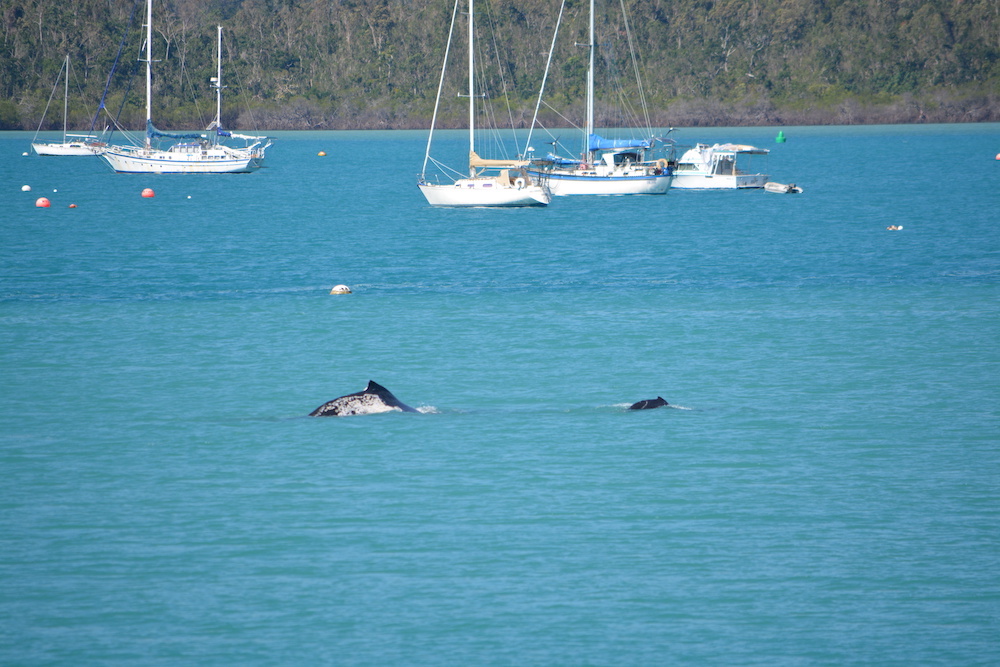
Interesting facts about the whales who visit the Whitsundays
- At least 17,000 humpback whales make the migration along the Australian east coast and every year that number grows.
- Before the whales leave Antarctic waters they fill up on tonnes of krill, not eating on the migration at all and instead of living off their own body fat.
- Humpbacks are the most commonly sighted whale species in the Whitsundays, with other migratory species such as the minke whales also visiting.
- Adult humpbacks reach12-18 metres in length. Calves are approximately 4 meters
- The Whales you see in the Whitsundays travel 10,000km from Antarctica to Tropical North Queensland and back.
- Whales give birth in the Whitsundays because of the warm, protected waters. The calves need time to build up blubber before they are strong enough to live in the freezing and harsh conditions of Antarctica.
- The whale song you hear can travel for hundreds of kilometres and produce up to 170 decibels of sounds.
- Whales can hold their breath for up to 40 minutes and swim at top speeds of 9-10 knots. This is why you might see one pop up from nowhere!
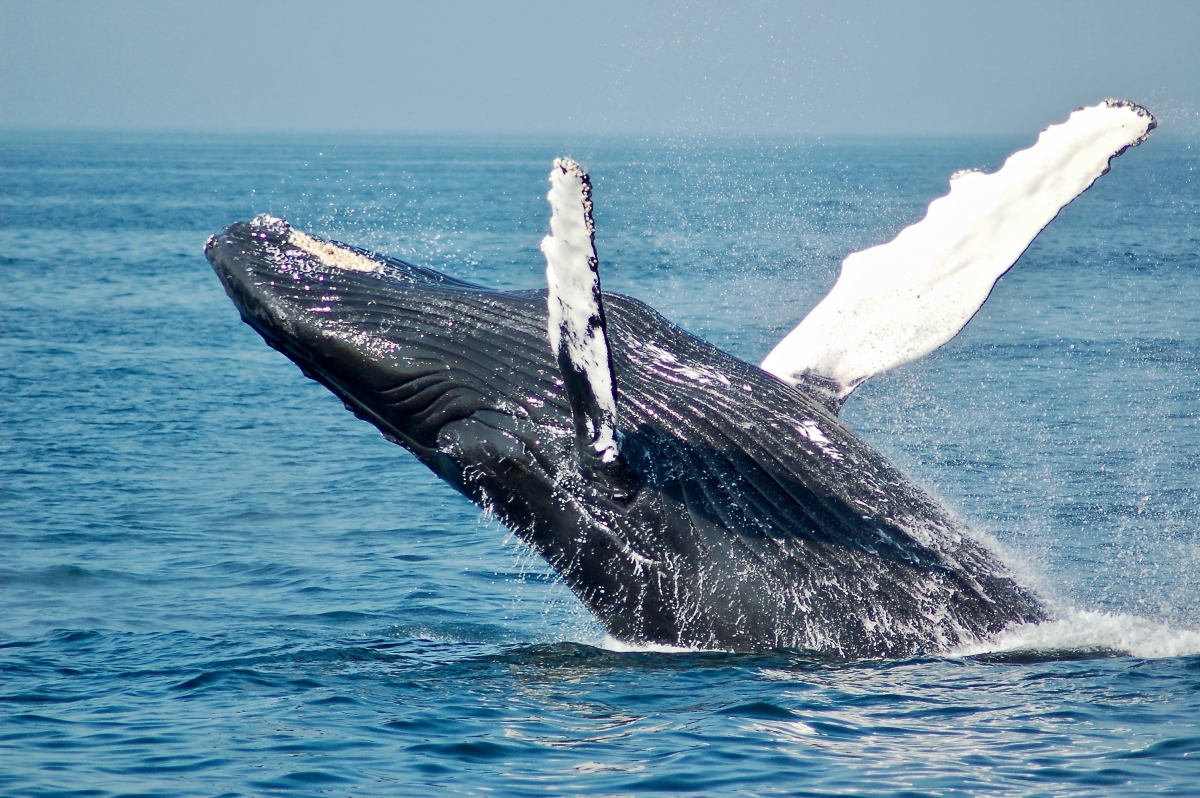
Mingloo and Chalkie the famouse white whales
Perhaps the most famous whale seen in the Whitsundays is Migaloo, a pure white adult male humpback, whose name means ‘white fella’ in some Aboriginal languages.
The hyper-pigmented white skin of Mingaloo is so rare he has been given extra protection by the Queensland and Commonwealth governments and sometimes has his own police escort. Mingaloo just turned 30, considering Humpbacks are believed to live up to 100 years old we will probably be seeing him for a long time. You can more about Mondaloo’s life in this ABC news article
Until recently Mingaloo was thought to be the only white whale in the world, however, in September 2011 an all-white calf emerged right here in the Whitsundays.
Named through a local competition after the white sand at Chalkie’s Beach, our humpback calf ‘Chalkie’ was first spotted by local fisherman Wayne Fewings in 2011. He/she is said to have a signature black spot on his tail and has been making regular appearances since 2015.
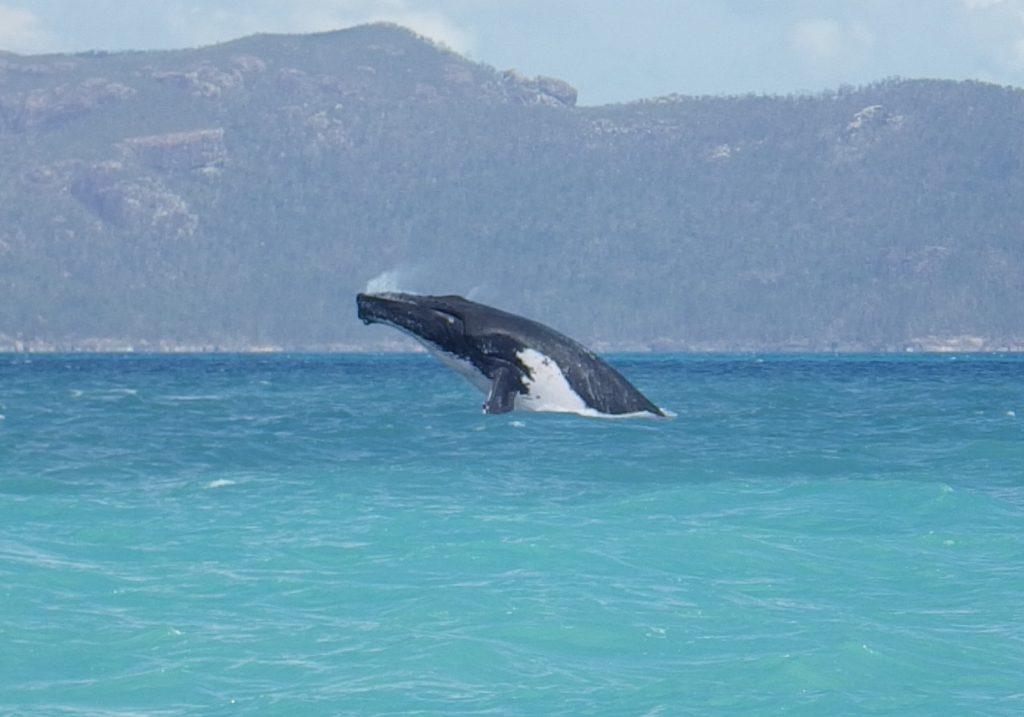 Photo C/O Rick Lambourne
Photo C/O Rick Lambourne
Experiencing Whale watching in the Whitsundays from your own private charter is the ultimate holiday. If you want to start planning for your bareboat adventure to coincide with the next whale season in The Whitsundays, please get in touch.
